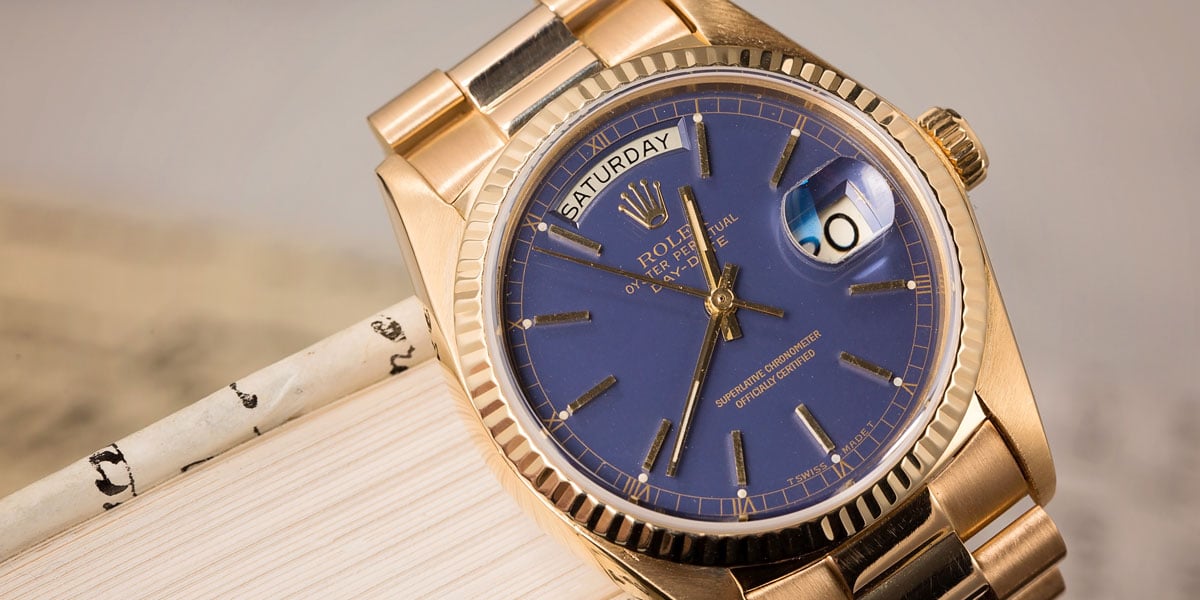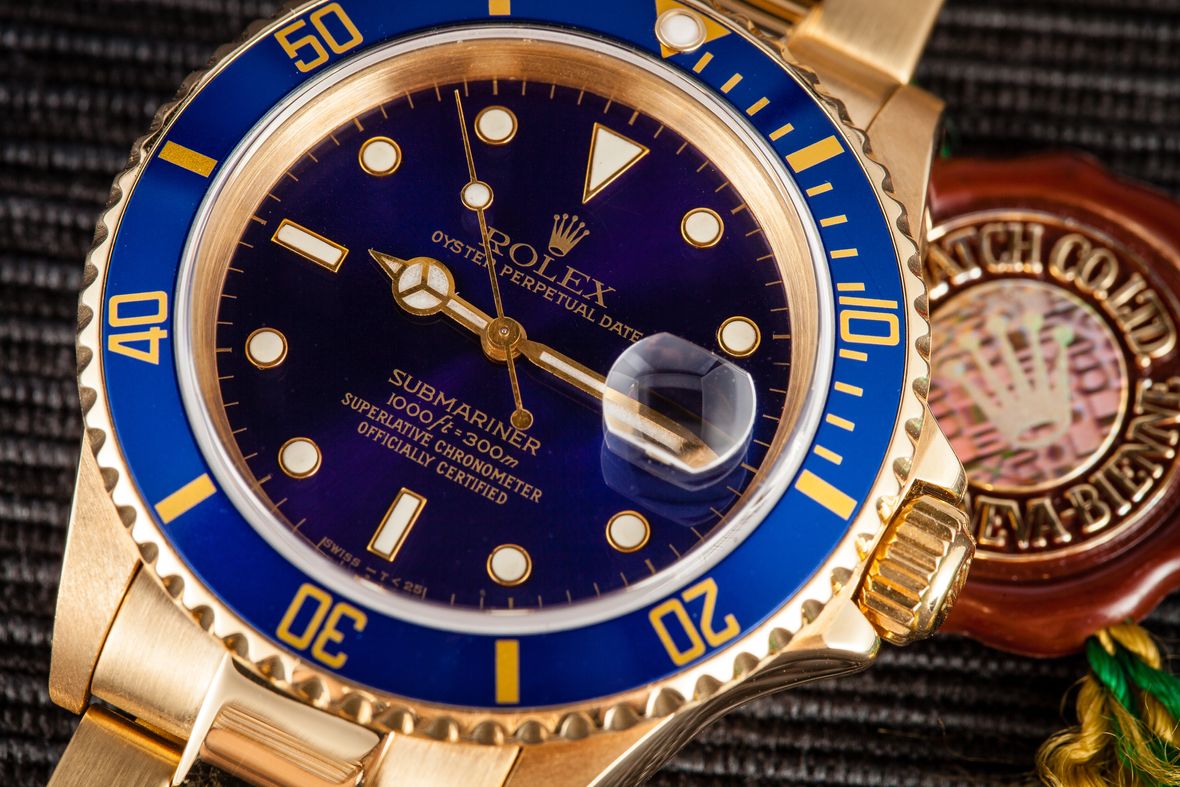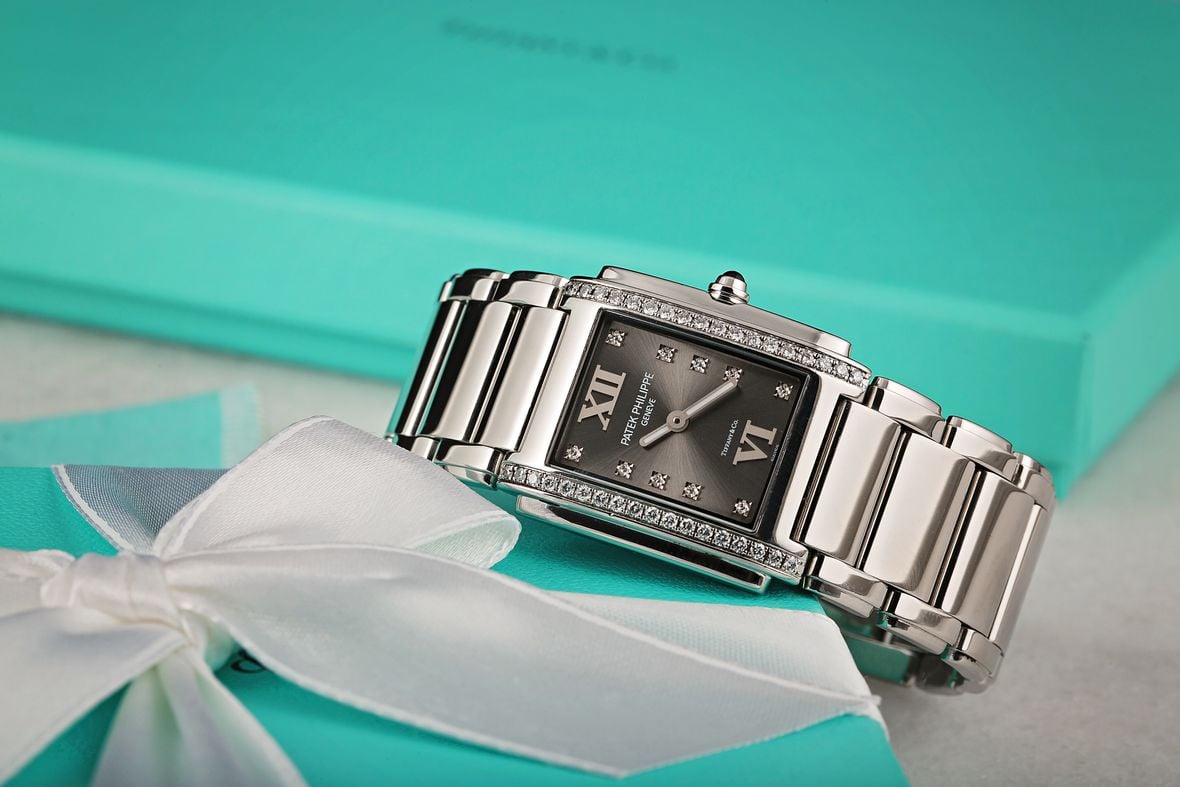When Rolex reached the big four-oh, they celebrated by creating an icon. The Datejust emerged in 1945, the culmination of everything the brand had dreamt up and pioneered up until that point, all housed together in one beautifully efficient and achingly stylish body.
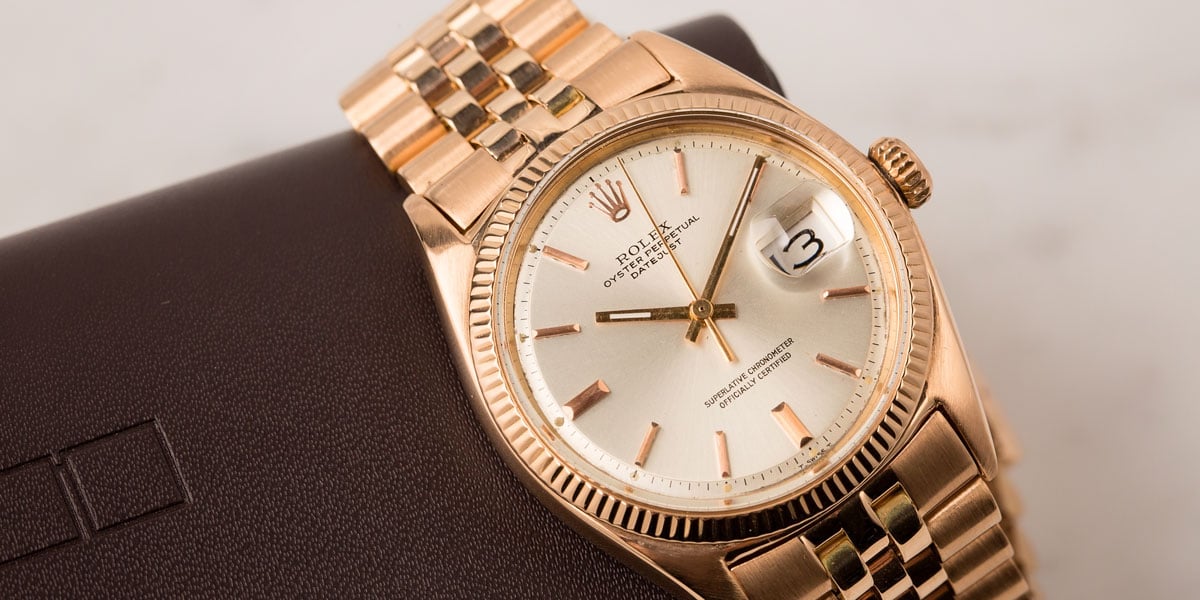
The Oyster case and the Perpetual movement, both Rolex innovations, made their new flagship the first waterproof self-winding wristwatch in the world to display a date aperture.
While the initial references appeared without the name on their dials, the date in the three o’clock window changing automatically ‘just’ in time every midnight, which itself was another world first, soon earned the watch its proper title; ‘just in time’—Datejust.
With the new watch came a new bracelet, the Jubilee, which, much like the piece for which it was created, perfectly captures the best of all worlds. In the same way that the five-link band sits in the range as the middle ground between the Oyster bracelet’s masculine sportiness and the grandstanding intricacy of the President, the Rolex Datejust collection has always had the gap in between the hardy sports range and the dressiness of the Day-Date or the Cellini series all to itself.
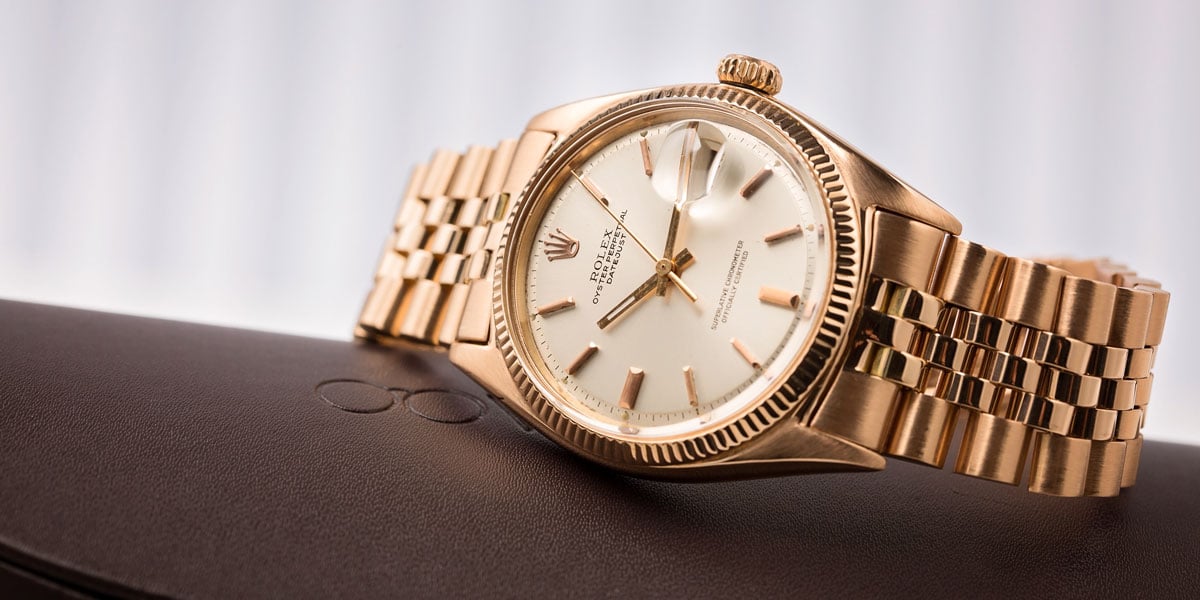
Now in constant production for more than 70 years, the Datejust has done more than perhaps any other of the brand’s considerable catalog in securing their unassailable reputation. During those three generations at the top, it has been crafted in as many variations of metals, colors and types of bezel as can be counted in one lifetime. But through it all, the blueprint has remained unchanged; the basic DNA of what makes a Datejust a Datejust.
Its last outwardly visible innovation came about back in 1954, with the inclusion of the Cyclops over the date window; yet another feature never seen before. While the magnifying lens has been a constant source of contention on many of the other models in the Rolex range, and in particular the Submariner, on the Datejust it has always added to the overall aesthetic rather than subtracted from its symmetry.
Although it has not held the flagship title since the Day-Date’s introduction in 1956, the unassuming, modestly styled Datejust is, and has always been, one of the big four—Rolex’s quartet of top selling archetypes, and an instantly recognizable emblem of the brand.
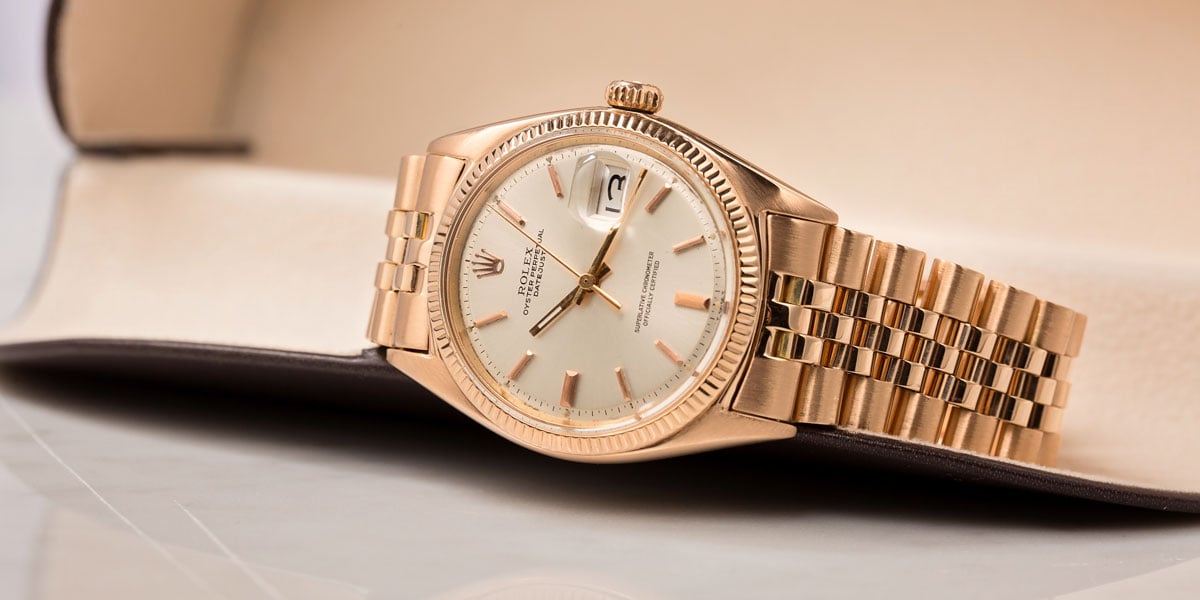
The Rolex Rose Gold Datejust 1601
The 1960s saw Rolex working to secure their place at horology’s top table, with an increasing focus on the sort of small, incremental changes to their range that all add up to huge improvements right across the board.
It brought us the ref. 1680 ‘Red’ Submariner, the first in the series to include a date complication, as well as its bigger, Comex-inspired sibling, the Double Red Sea-Dweller.
Mid-decade, the ref. 1601 Datejust was launched. With a caliber upgrade from the previous Cal. 1065, it was now powered for the first time by Rolex’s own 1500 series. Built around the architecture of the base Cal. 1530, early versions used the Cal. 1565, and received a further update in 1971 with the Cal. 1575, which brought with it the convenience of a hacking function.
While neither movement was outfitted with a Quickset mechanism, to give wearers the ability to change the date by using the crown, it was the 1500 calibers that introduced the cam and jewel system that created the instantaneous midnight change, still used by Rolex today.
From their first in-house series of calibers, the 1565 and 1575 were to become benchmarks in the world of mechanical watch movements, for their accuracy and resilience. Beautifully simple and extremely robust, they are highly regarded even today for their engineering excellence.
The watches themselves emerged in every conceivable permutation of bezel and dial detailing, with either yellow gold or two-tone Rolesor cases, or as the version we have here at Bob’s, in a handsome rose gold.
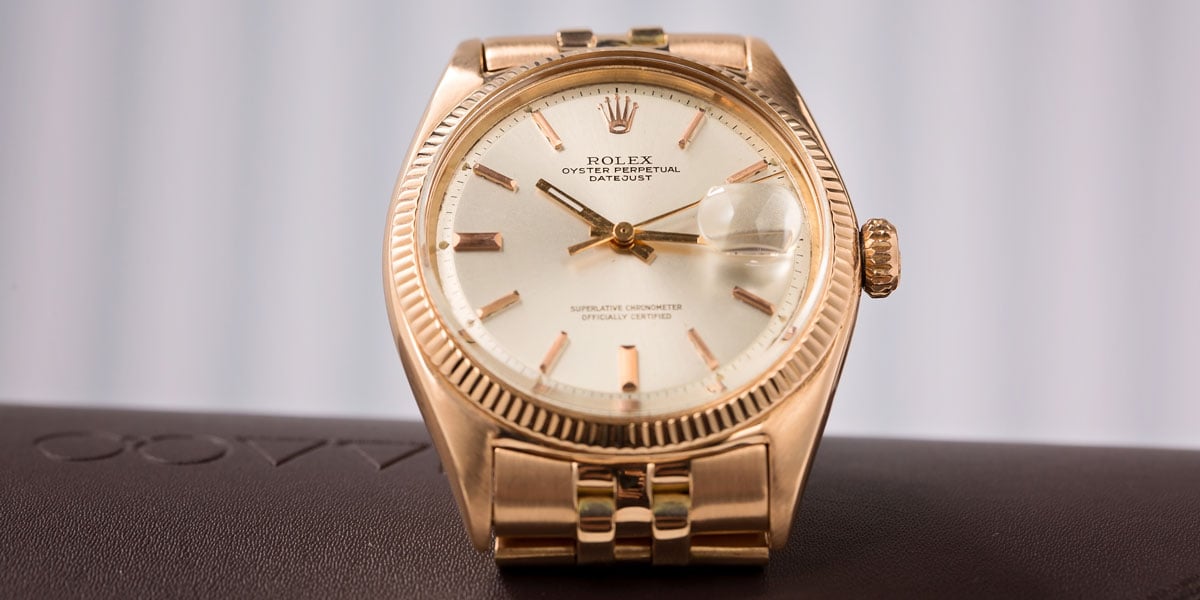
Bob’s Watches Datejust ref. 1601
Rolex had been using pink hued gold in their designs for decades before they developed their own proprietary Everose in 2005. Achieving its unique tint by blending yellow gold with copper, the only red metal element, the resulting rose-colored precious metal offers a far more understated base around which to forge the iconic shapes of their watches.
Our Datejust is a perfect example. Warmer and with a much softer appearance than steel or white gold, but without the brashness that can come with an all yellow piece, the case of our 1601 glows rather than shines.
The pie pan dial, which could have jarred with this gentler look if it had been in a highly contrasting white, is finished in a more harmonizing silver. The rose gold stick indexes catch the light beautifully due to their beveled edging and the surrounding fluted bezel sets the whole watch apart as a modest statement of discreet luxury.
At the traditional 36mm diameter, before Rolex introduced a 41mm model to the range, the Datejust 1601 is not a watch that shouts for attention. It has a quiet reserve that brings with it a versatility to match with a wider range of situations. It is the model to wear in both business meetings and by the pool, as well as on the journey between the two.
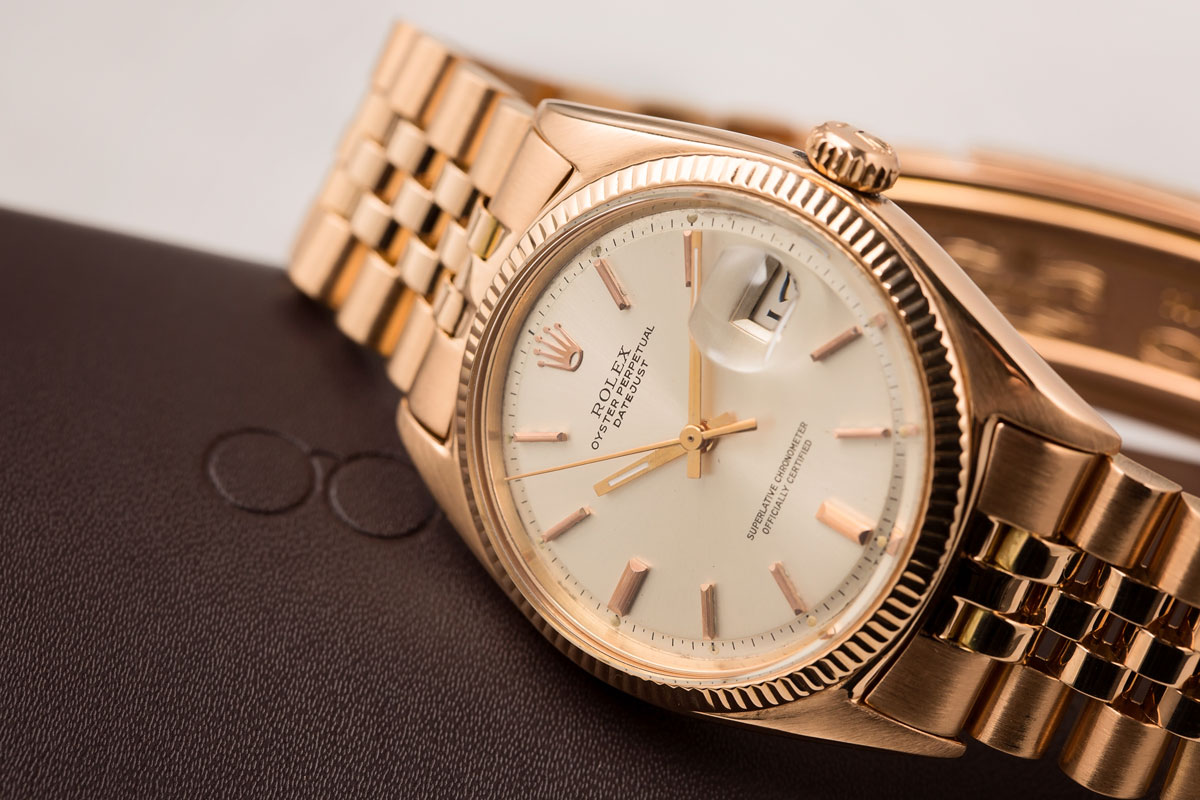
70 Years of Perfectionism
Seven decades is a long time for any design to stay relevant, but the Rolex Datejust has managed it without breaking a sweat.
Pick any reference from its long history and you will be the proud owner of one of the best of its kind—a simple, almost humble timepiece that does everything you could ever ask of it.
The rose gold example here at Bob’s is for those who appreciate the finest styling and unmatched engineering.

